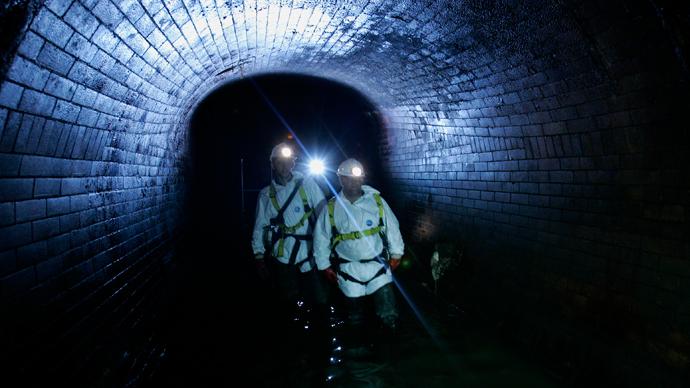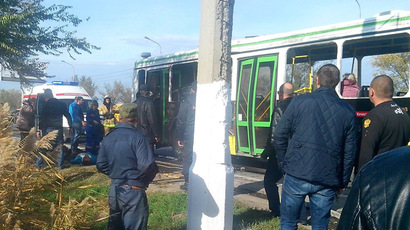Sniffing out explosives: Scanner would allow police to locate bomb factories from sewers

An EU-funded research group is working on a project that could allow police to track bomb-making labs from below. The $6 million project involves sensors installed in sewers that detect chemical waste dumped in the production of explosives.
Dubbed EMPHASIS, the project of the Swedish Defense Research
Agency (FOI) will enable police to prevent terrorist acts carried
out with improvised explosive devices (IEDs).
Some of the bombers involved in recent terrorist attacks, such as
those behind the July 7, 2005 London bombings, have been able to
produce homemade explosives by using private kitchens and
bathrooms, with little or no attempt to conceal their activities.
Police have only been able to locate such improvised labs by
relying on tip-offs or intelligence, and by searching suspicious
buildings, as they lack scientific detection equipment, according
to the FOI.
“A system like EMPHASIS would allow law enforcement agencies
to become proactive, to act during a phase where there is low
threat to citizens and thus prevent production during a time
where alternative response actions can be exploited,” the
project’s website says.

EMPHASIS stands for Explosive Material Production Hidden Agile Search and Intelligence System. While its core technology lies in special detection rods filtering wastewater, it involves a command center analyzing processed data and alarms, and a special police team with a high resolution sensing unit tasked with pinpointing the sites of IED production on the ground.
An infrared laser will be used for detecting gas molecules of the
chemicals sought, narrowing down the search to a particular spot.
According to the FOI research team’s chief, Hans Onnerud, the
system’s “ion selective electrodes” were successfully
lab-tested in October, and will undergo real-life tests in a
wastewater flow next year.
“In the long run, a commercially available system of these
types that has a capacity to be used for tracking bomb factories
would offer a huge advantage to police authorities,” Onnerud
said.

Moreover, the authorities of some EU member states have shown
interest in widening the areas of the system’s application.
“We are thinking about illicit drugs detection and this could
be the next aim we focus on,” said the project’s sensor
specialist, Frank Schnuerer, of the Fraunhofer Institute for
Chemical Technology in Karlsruhe, Germany.
The European Union has been funding the EMPHASIS program with
€4.5 million ($6 million), according to a report published in the
New Scientist magazine.














